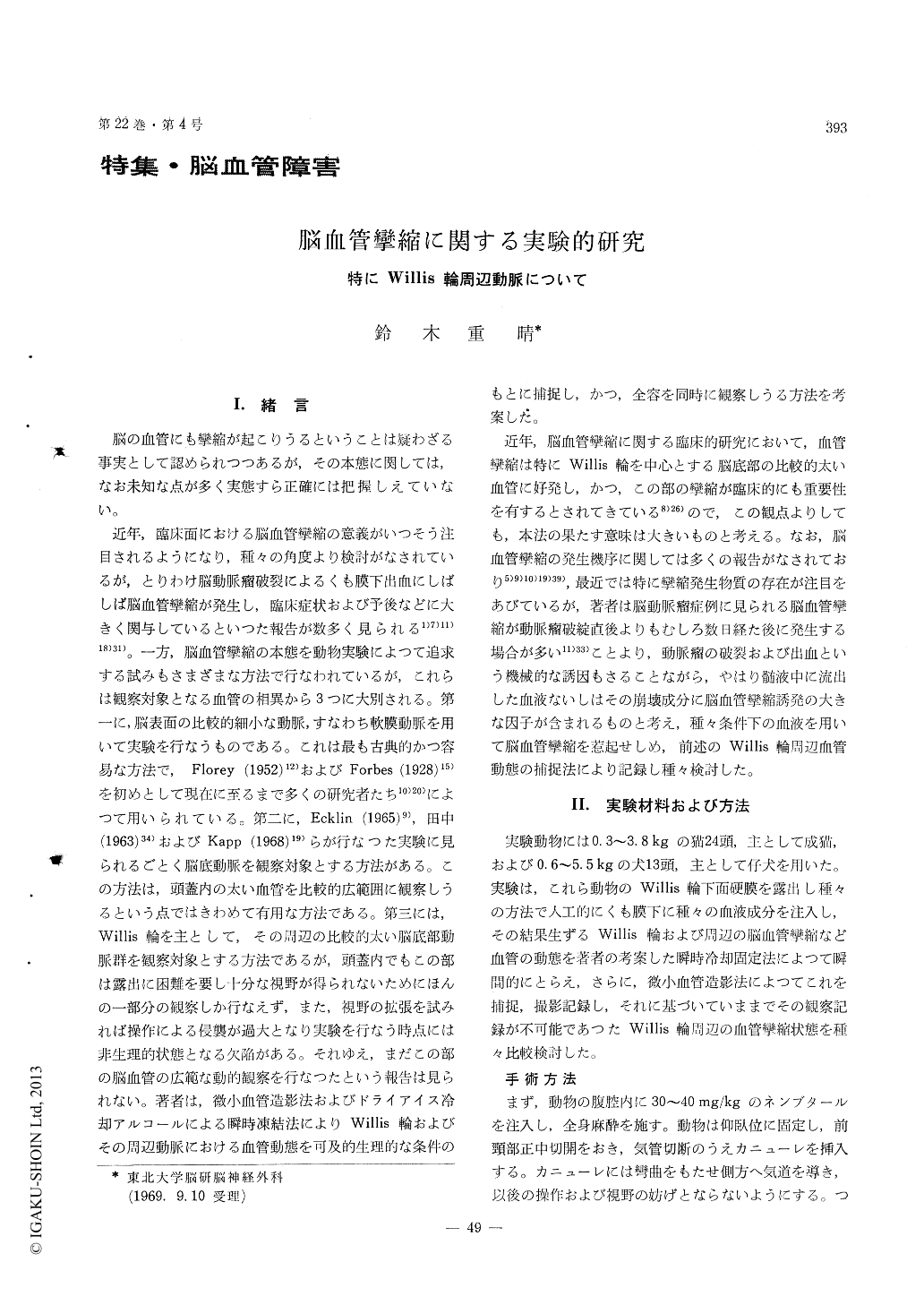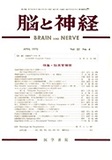Japanese
English
- 有料閲覧
- Abstract 文献概要
- 1ページ目 Look Inside
I.緒言
脳の血管にも攣縮が起こりうるということは疑わざる事実として認められつつあるが,その本態に関しては,なお未知な点が多く実態すら正確には把握しえていない。
近年,臨床面における脳血管攣縮の意義がいつそう注目されるようになり,種々の角度より検討がなされているが,とりわけ脳動脈瘤破裂によるくも膜下出血にしばしば脳血管攣縮が発生し,臨床症状および予後などに大きく関与しているといった報告が数多く見られる1)7)11)18)31)。一方,脳血管攣縮の本態を動物実験によって追求する試みもさまざまな方法で行なわれているが,これらは観察対象となる血管の相異から3つに大別される。第一に,脳表面の比較的細小な動脈,すなわち軟膜動脈を用いて実験を行なうものである。これは最も古典的かつ容易な方法で,Florey (1952)12)およびForbes (1928)15)を初めとして現在に至るまで多くの研究者たち10)20)によつて用いられている。第二に,Ecklin (1965)9),田中(1963)34)およびKapp (1968)19)らが行なった実験に見られるごとく脳底動脈を観察対象とする方法がある。この方法は,頭蓋内の太い血管を比較的広範囲に観察しうるという点ではきわめて有用な方法である。第三には,Willis輪を主として,その周辺の比較的太い脳底部動脈群を観察対象とする方法であるが,頭蓋内でもこの部は露出に困難を要し十分な視野が得られないためにほんの一部分の観察しか行なえず,また,視野の拡張を試みれば操作による侵襲が過大となり実験を行なう時点には非生理的状態となる欠陥がある。それゆえ,まだこの部の脳血管の広範な動的観察を行なったという報告は見られない。著者は,微小血管造影法およびドライァイス冷却アルコールによる瞬時凍結法によりWillis輪およびその周辺動脈における血管動態を可及的生理的な条件のもとに捕捉し,かつ,全容を同時に観察しうる方法を考案した。
Though it had been impossible to observe a complete view of the circle of Willis simultaneously in animal experiments, a new method to be able to observe the vasospasm of the circle of Willis was deviced in this study. That was named as quick-freezing-fixation with microangiographical tech-nique.
By this method, the cerebral vasospasm of the base of the brain in responce to subarachnoid hem-orrhage was studied in anesthetized cats and dogs.
In this experiment, 24 cats and 13 dogs were used as material and the fresh autoblood and the auto-bloood incubated in 37°C during 2 to 10 days were employed to make an artificial subarachnoid hemo-rrhage. And the following results were obtained.
(1) The new method, quick-freezing-fixation with microangiographical technique, was seemed to be very usefull to observe the dynamic states of the vessels of the base of the brain.
(2) The substances to constrict the wall of the cerebral vessels are contained in the fresh blood and it will be increased in the incubated blood. That is to say, the cerebral vasospasm is seemed to occur more frequently in few days after the subarachnoid hemorrhage than immediately after that.
(3) It was considered that not only some com-ponents in blood but other unknown facters are concerned with the cerebral vasospasm. (4) Basilar artery was seemed to be the vessel to occur the vasospasm most frequently in the cere-bral vessels at least in the cat and the dog. (5) Cerebral vasospasm was seemed to be apt to occur in the cat rather than the dog.

Copyright © 1970, Igaku-Shoin Ltd. All rights reserved.


